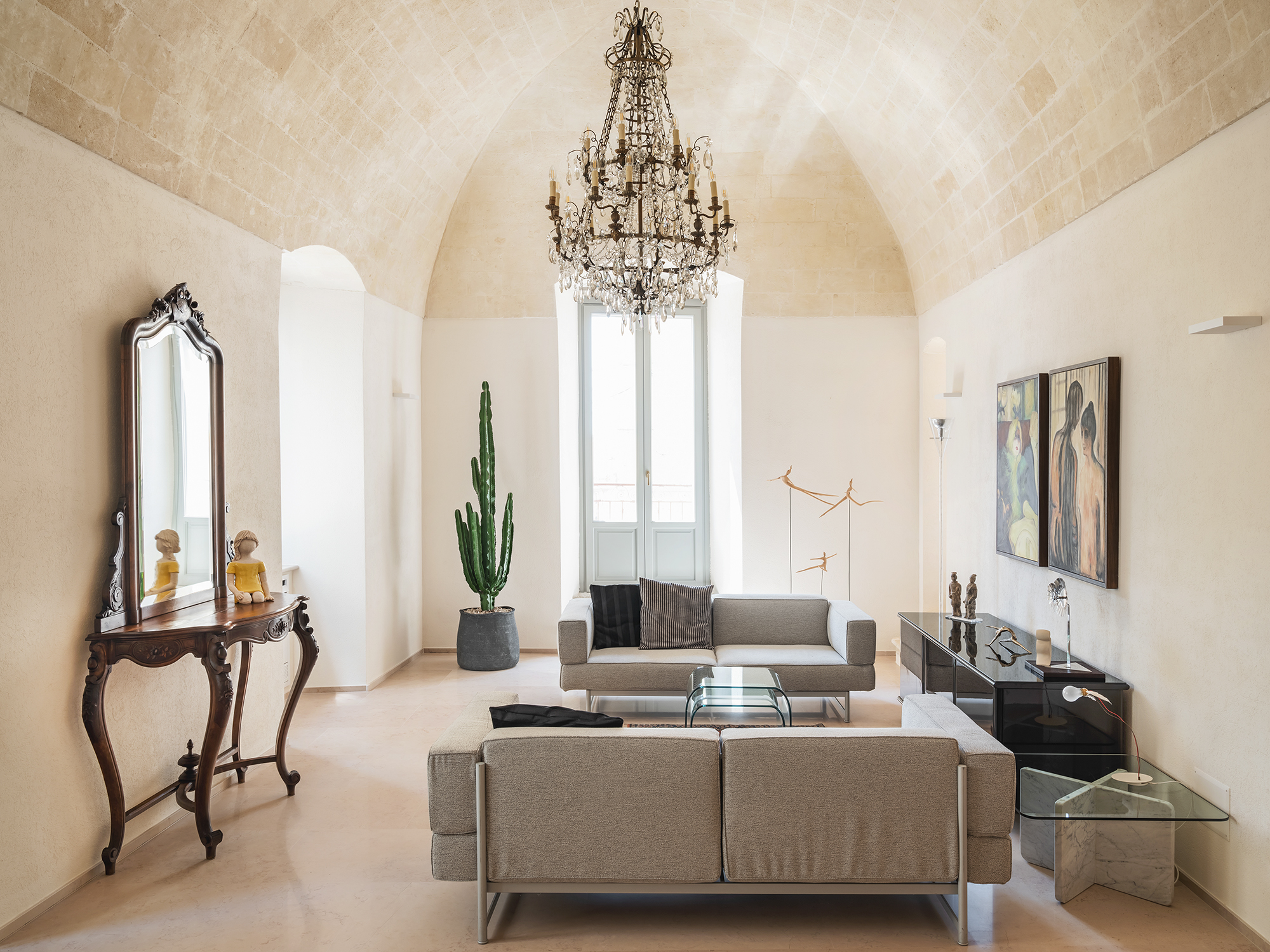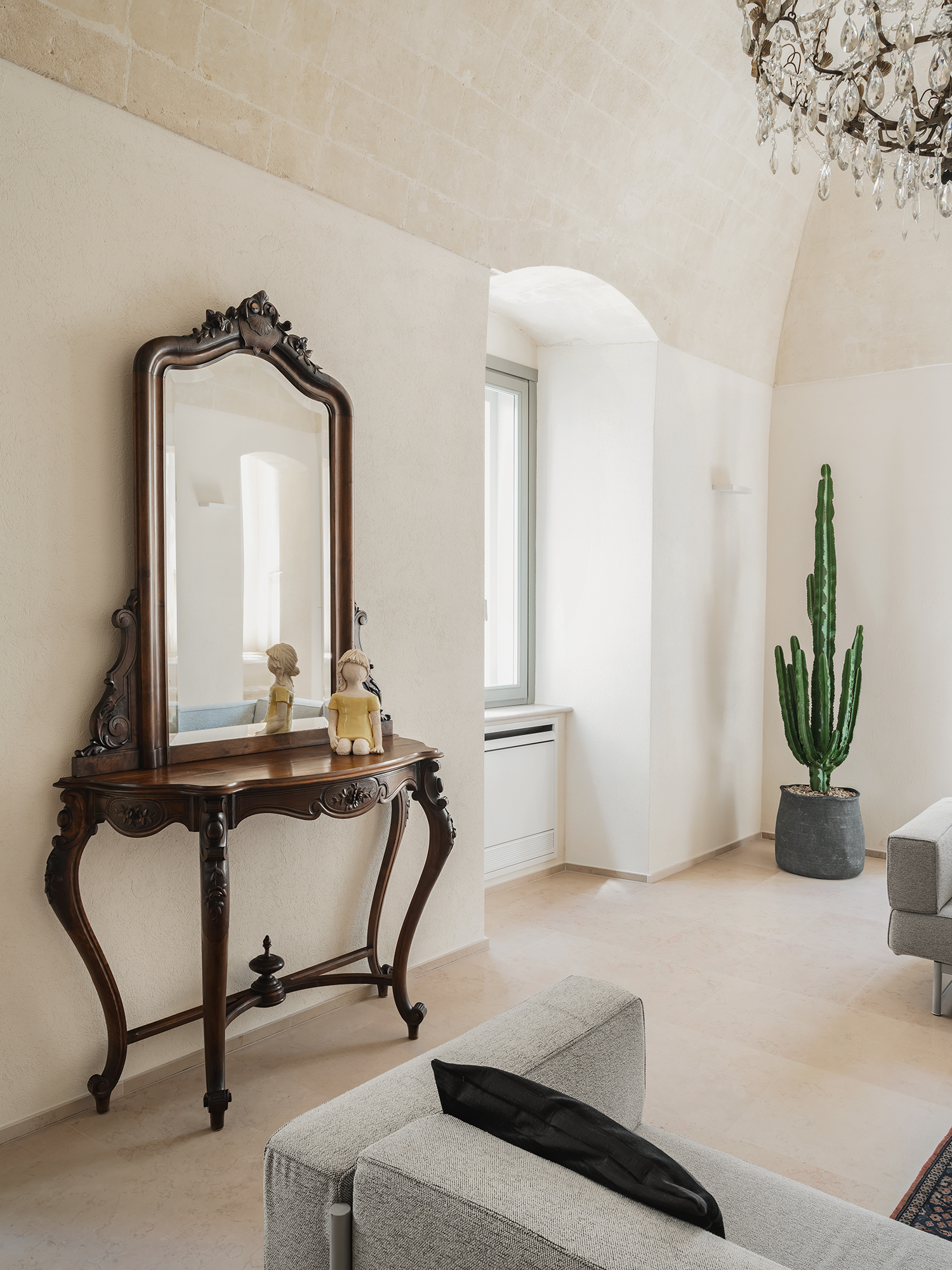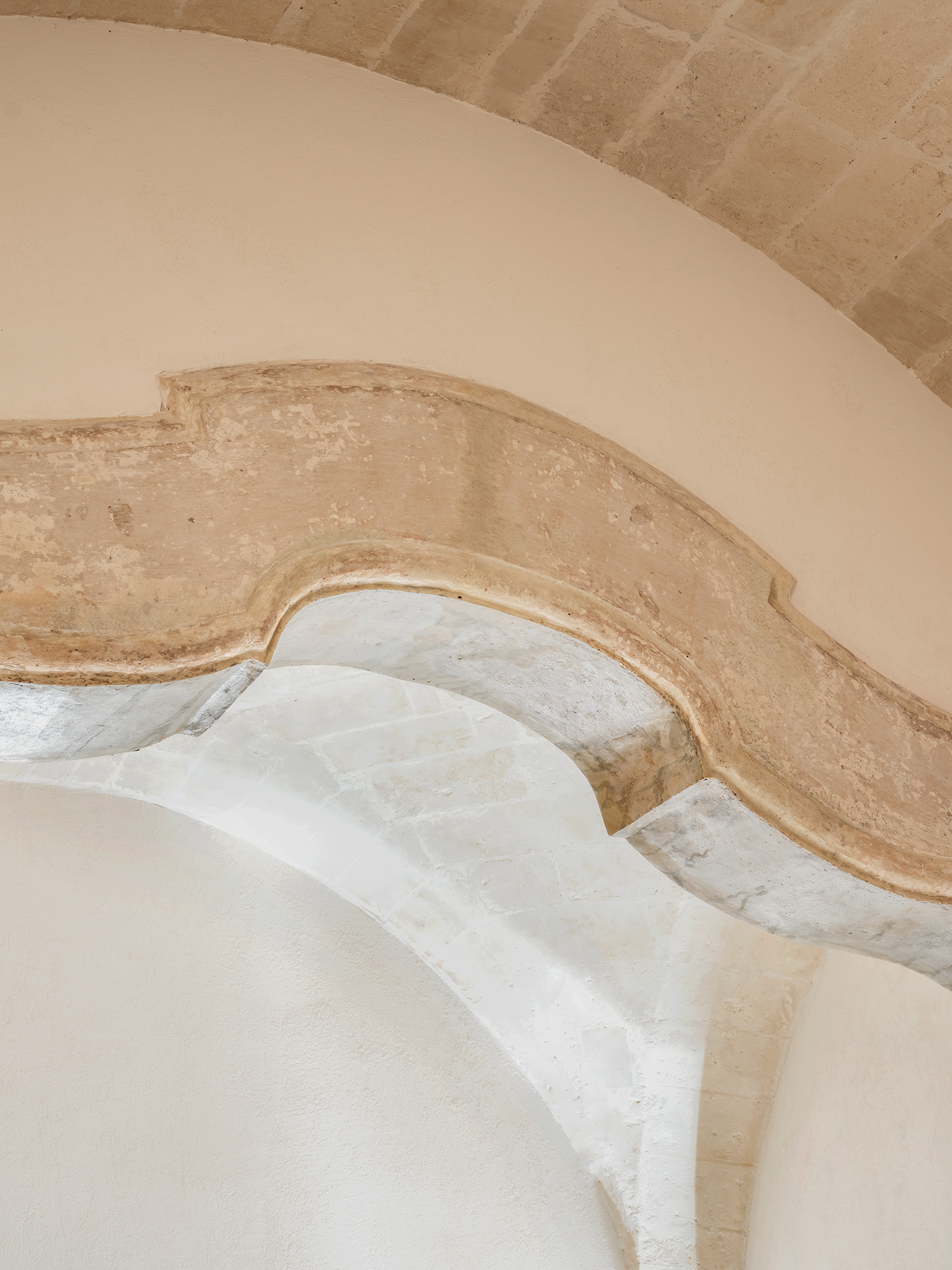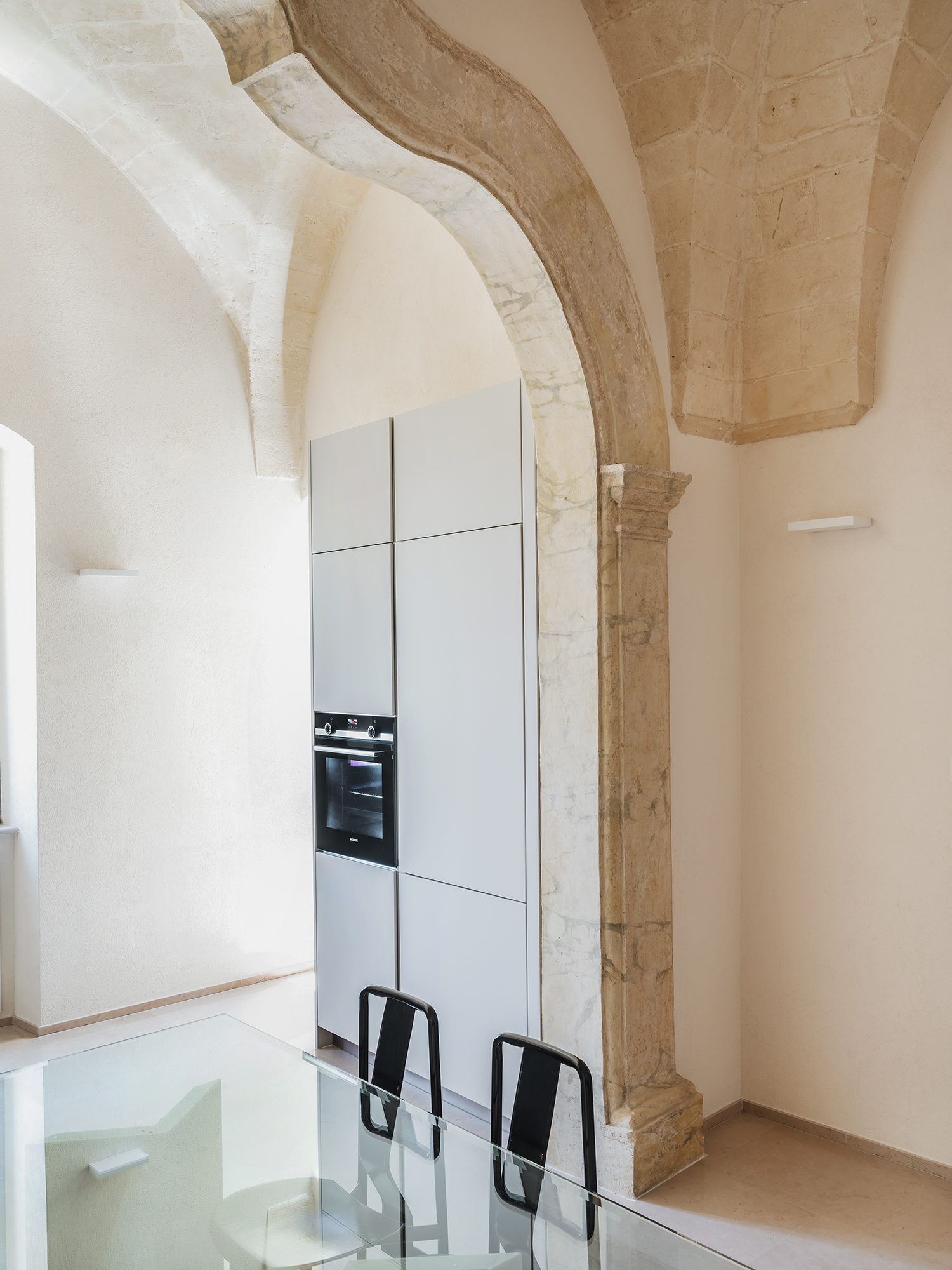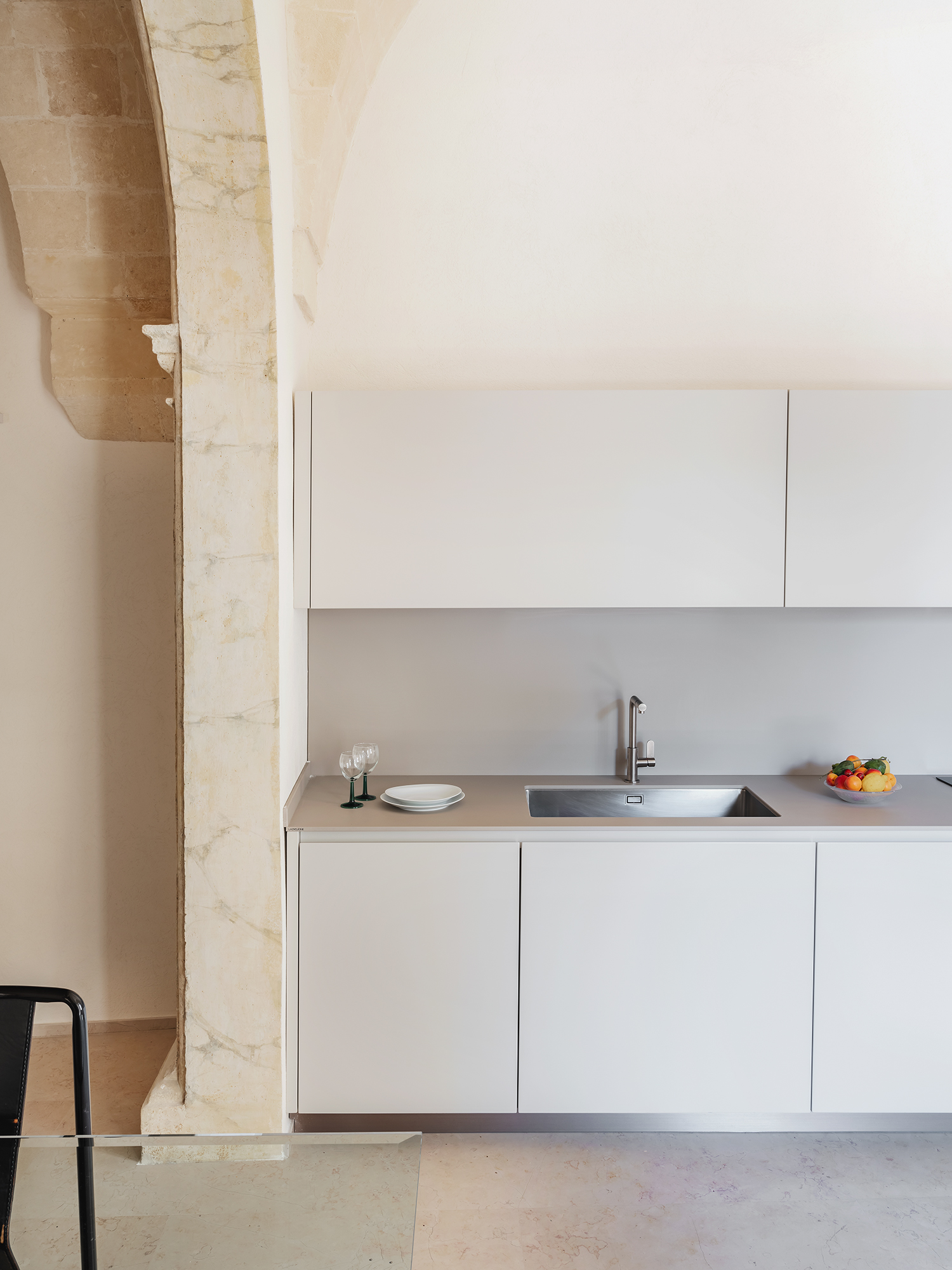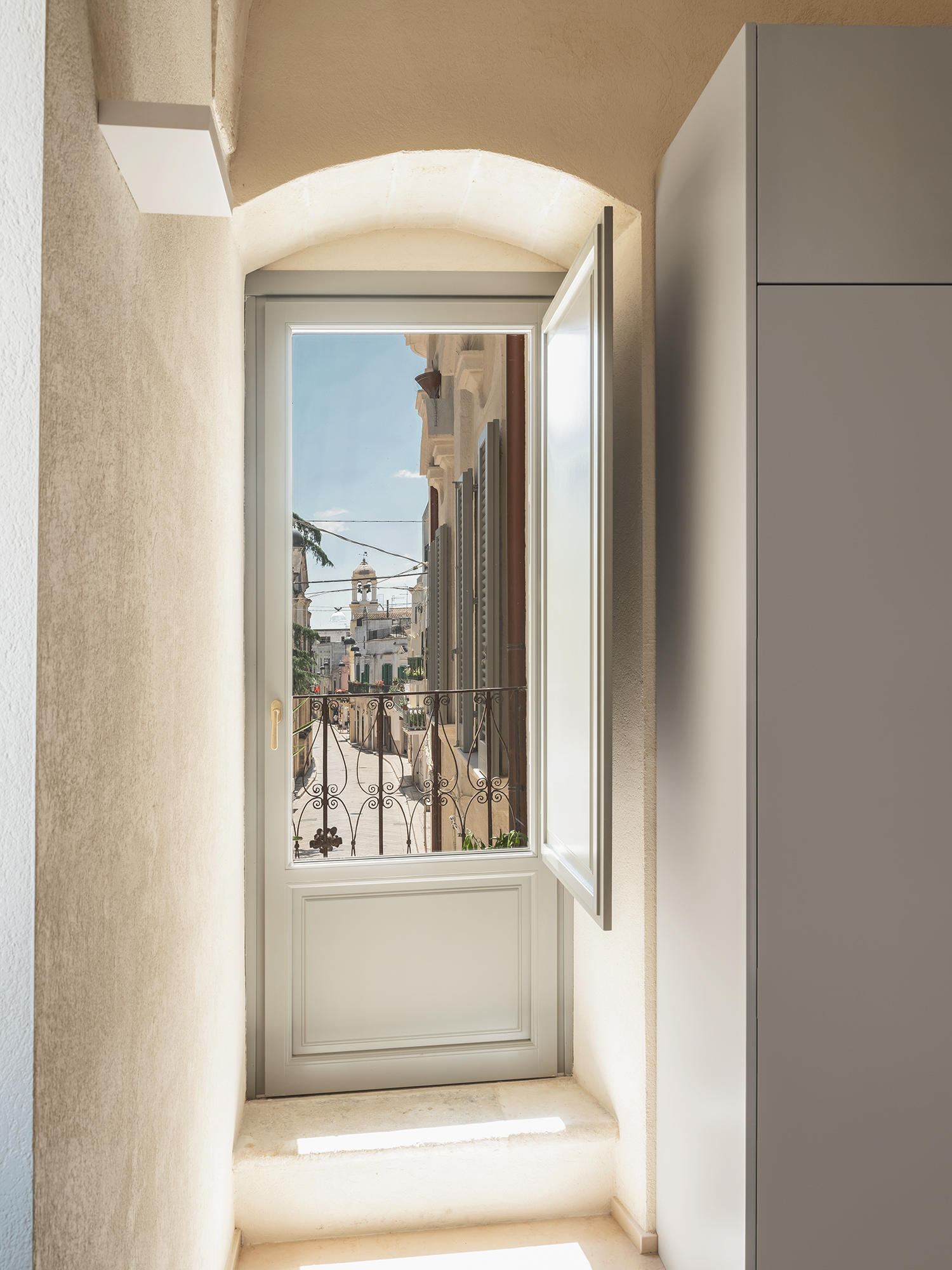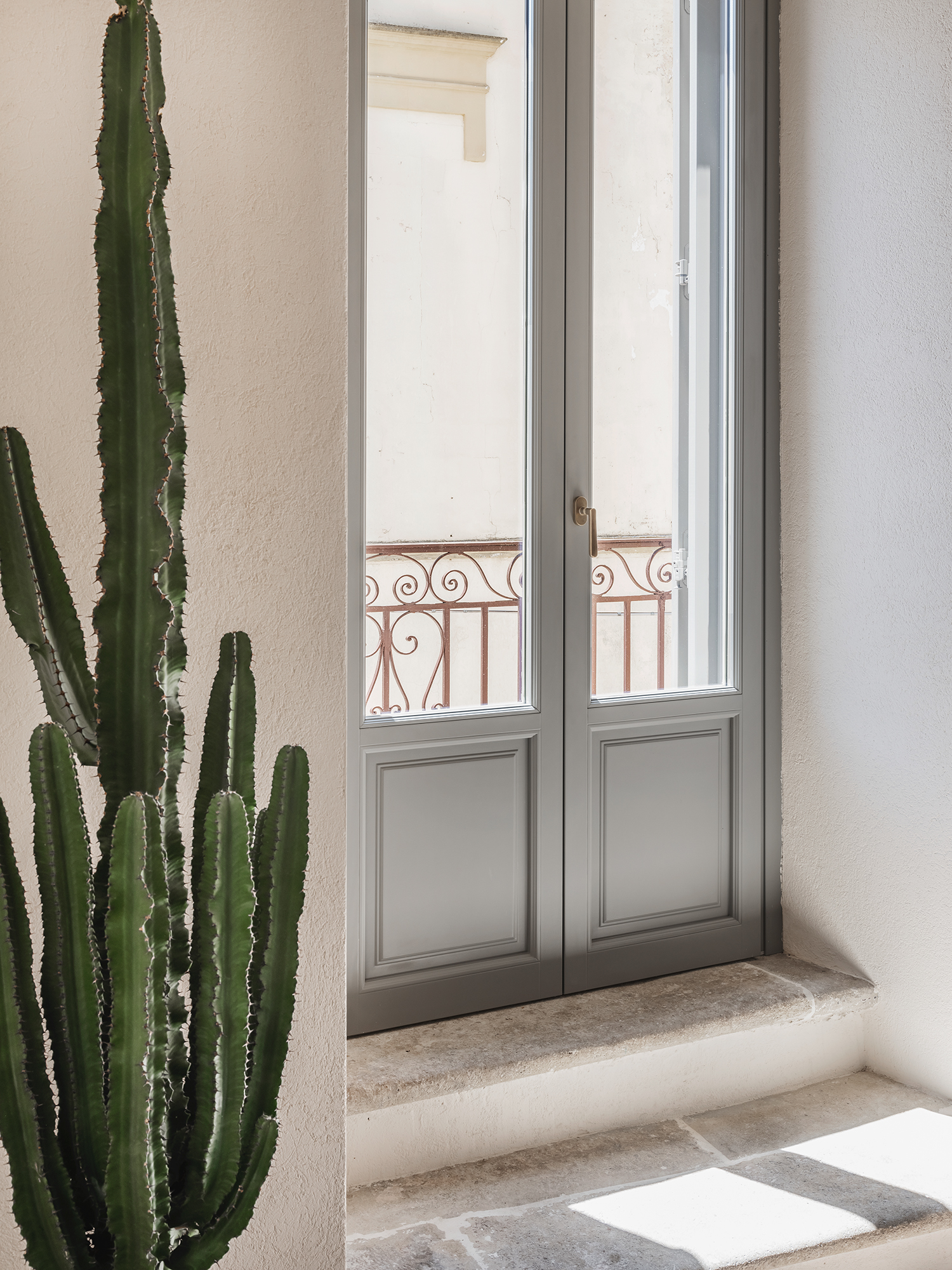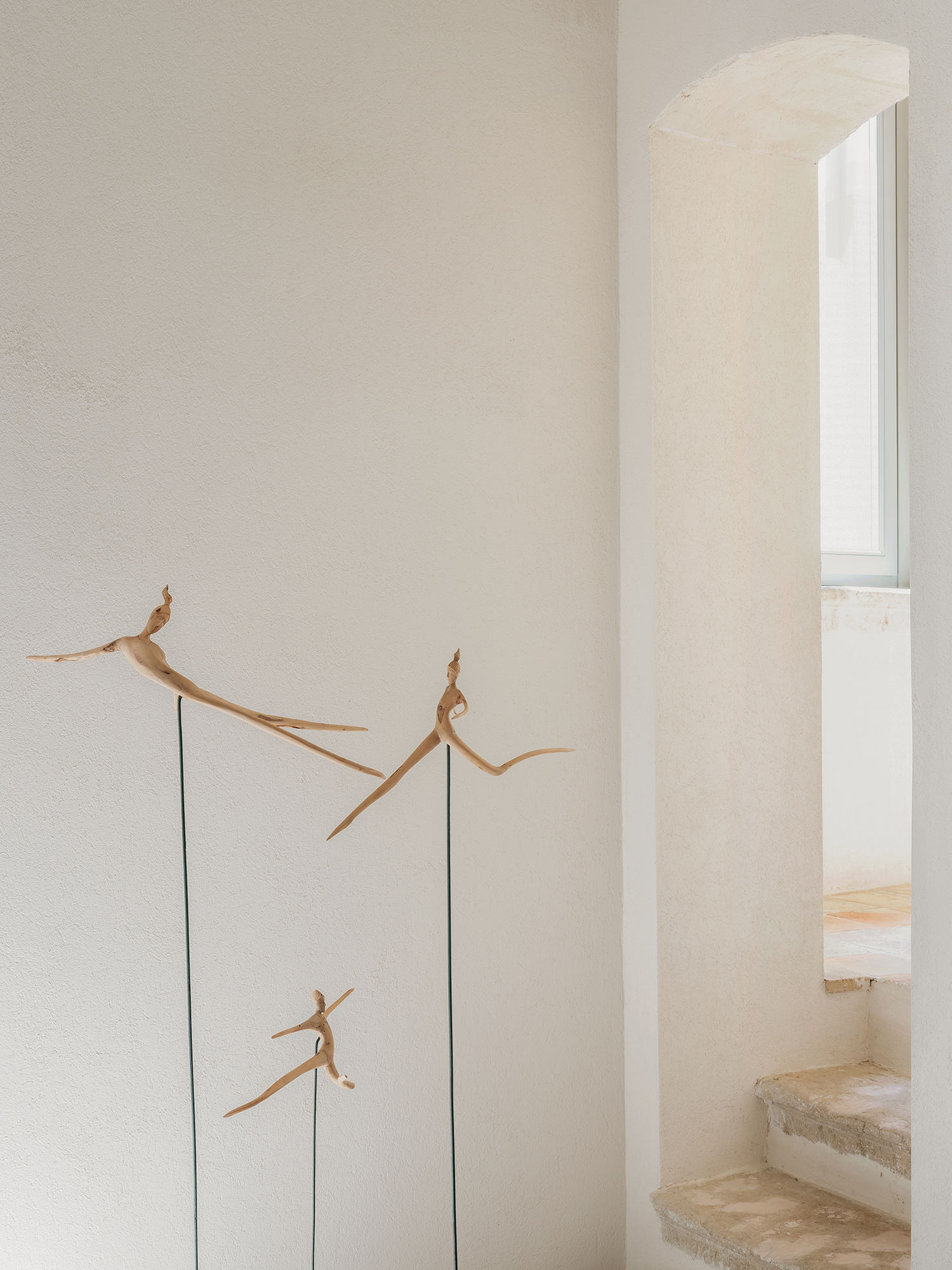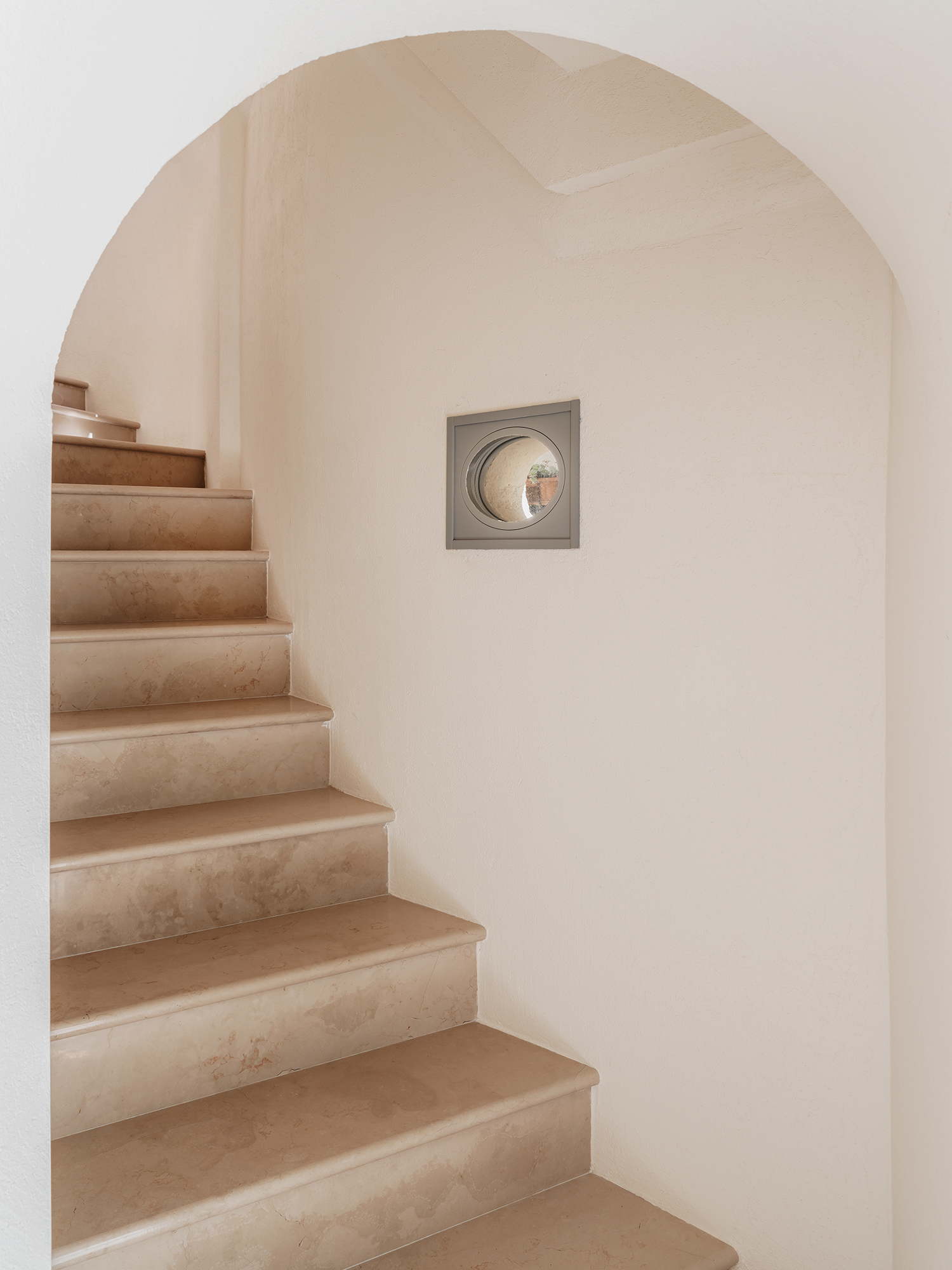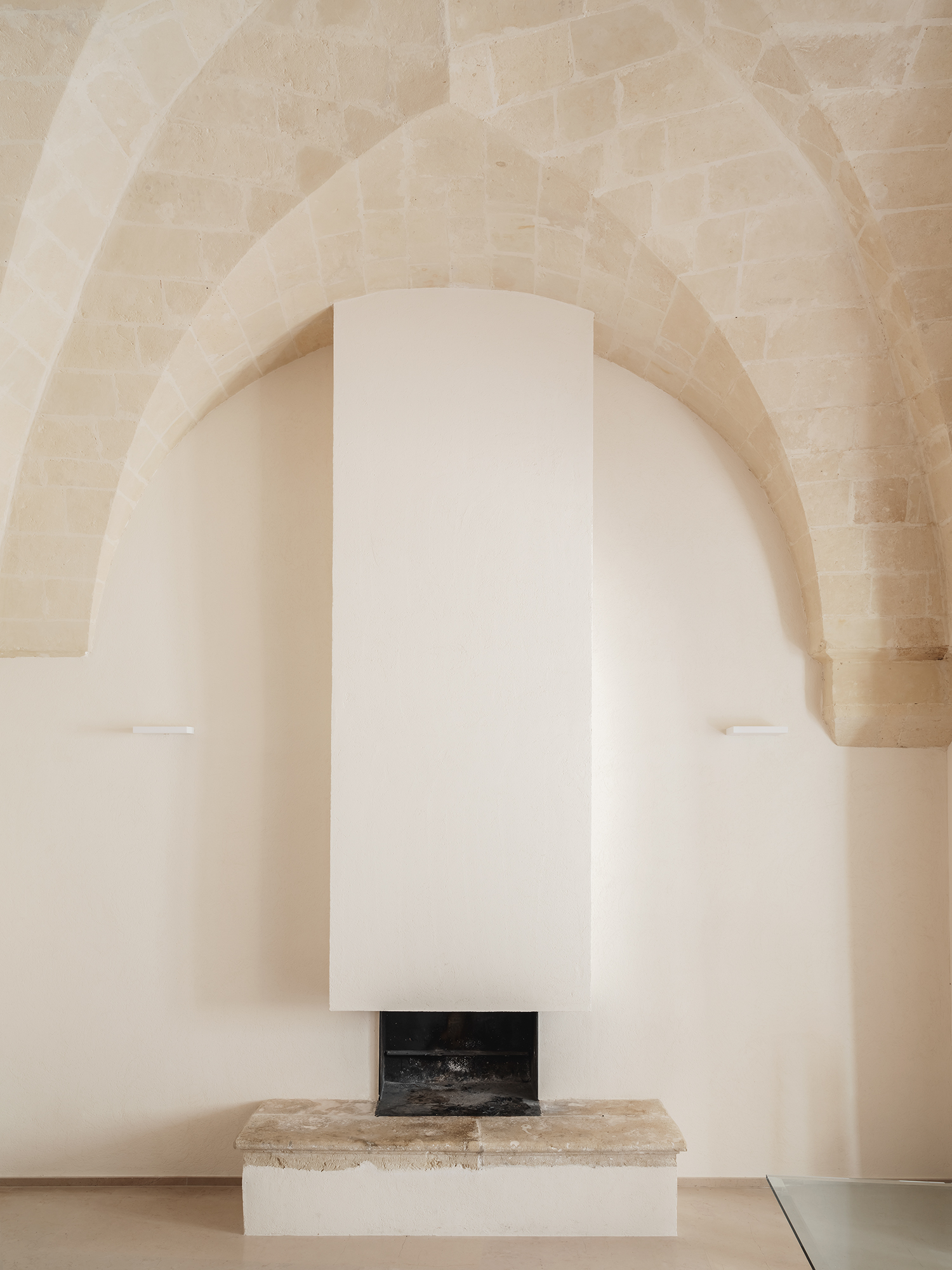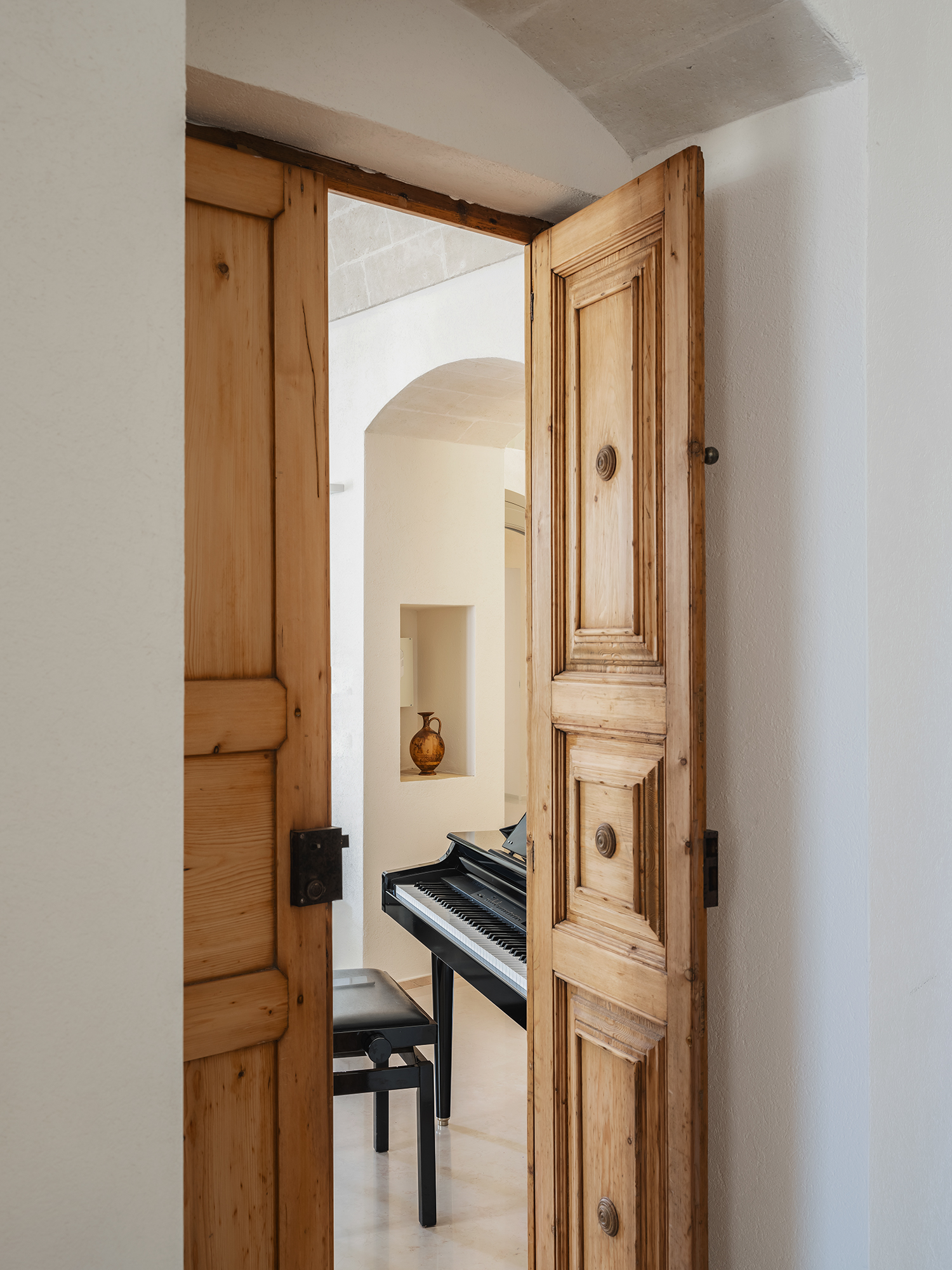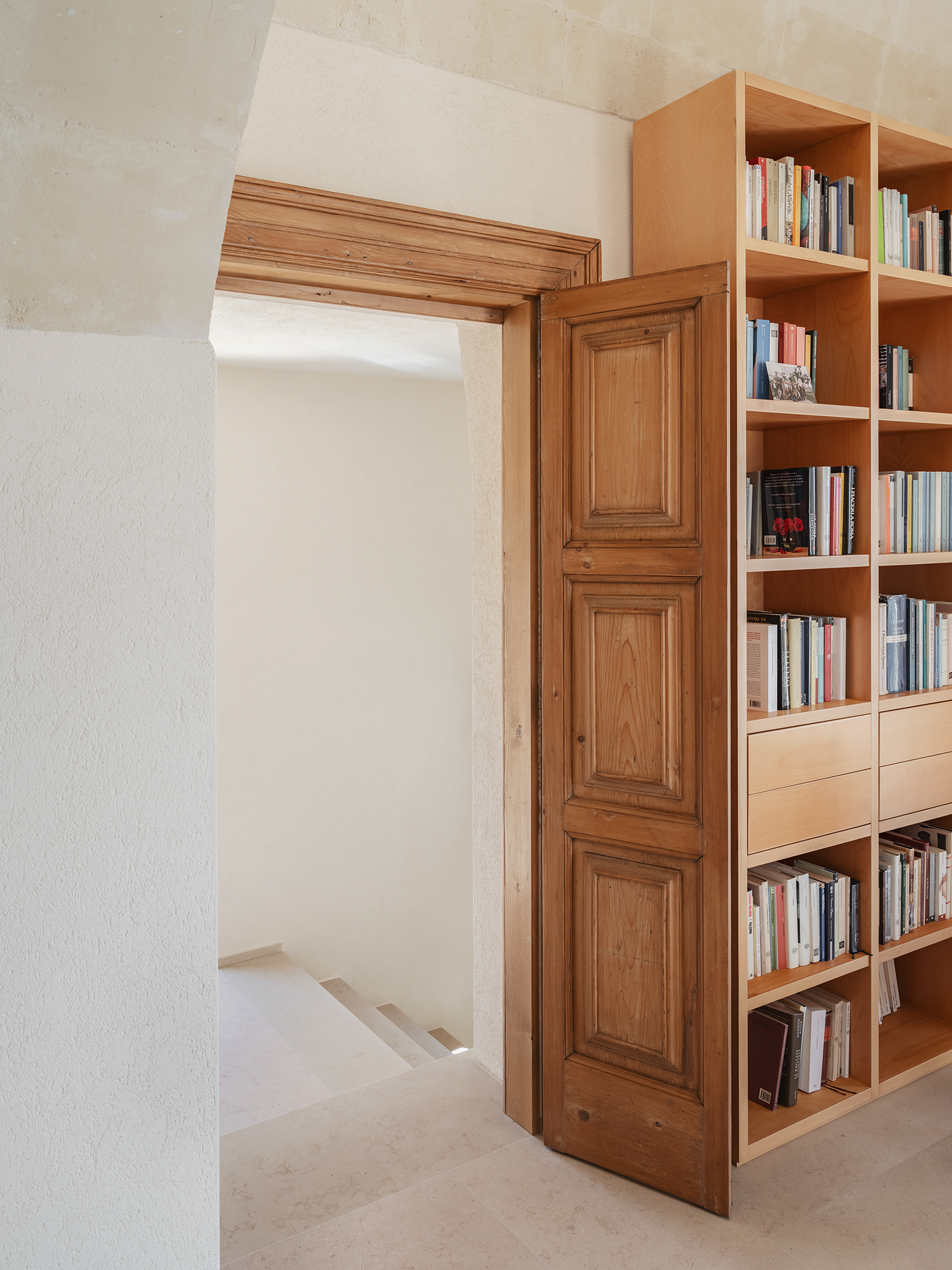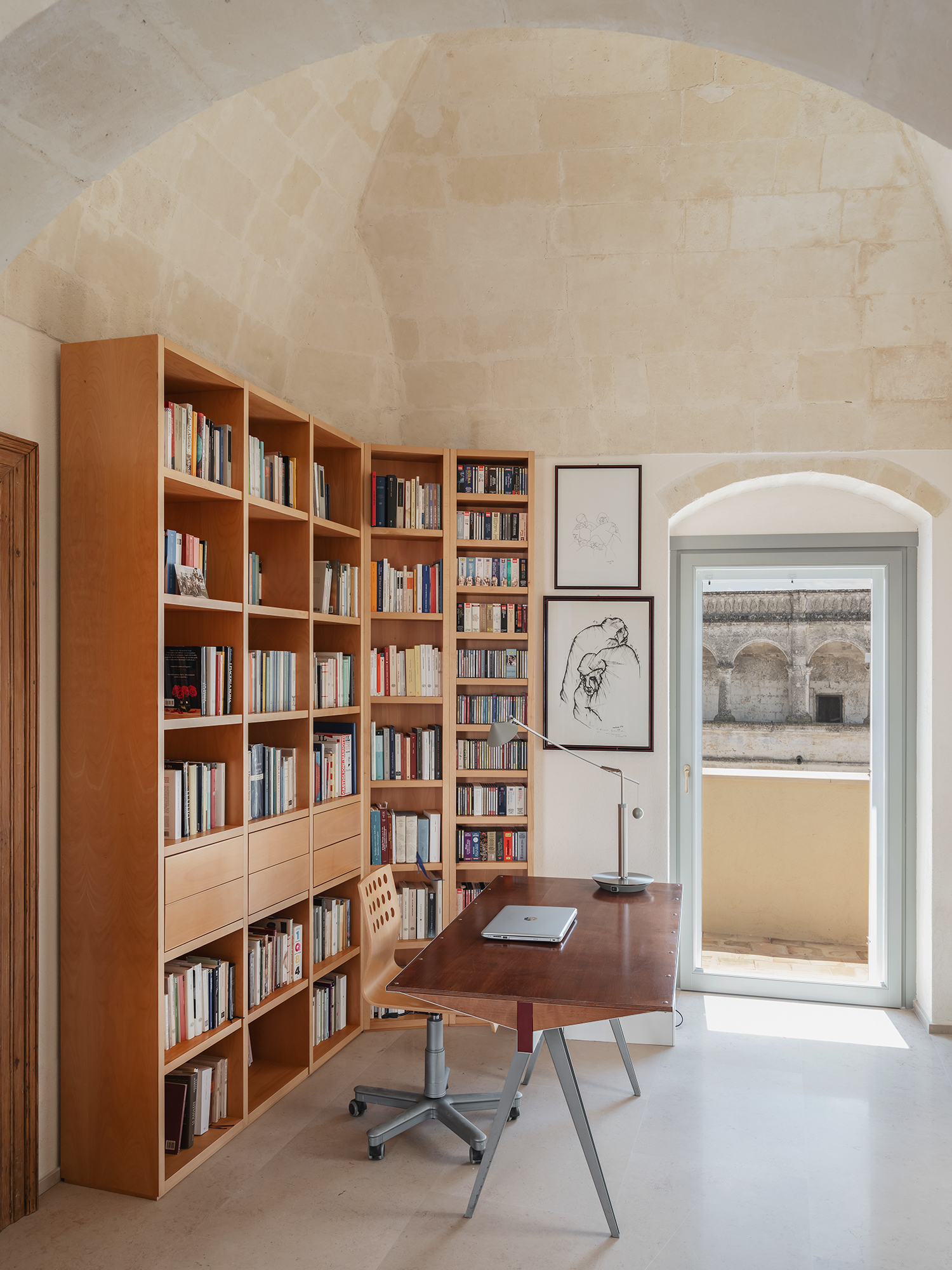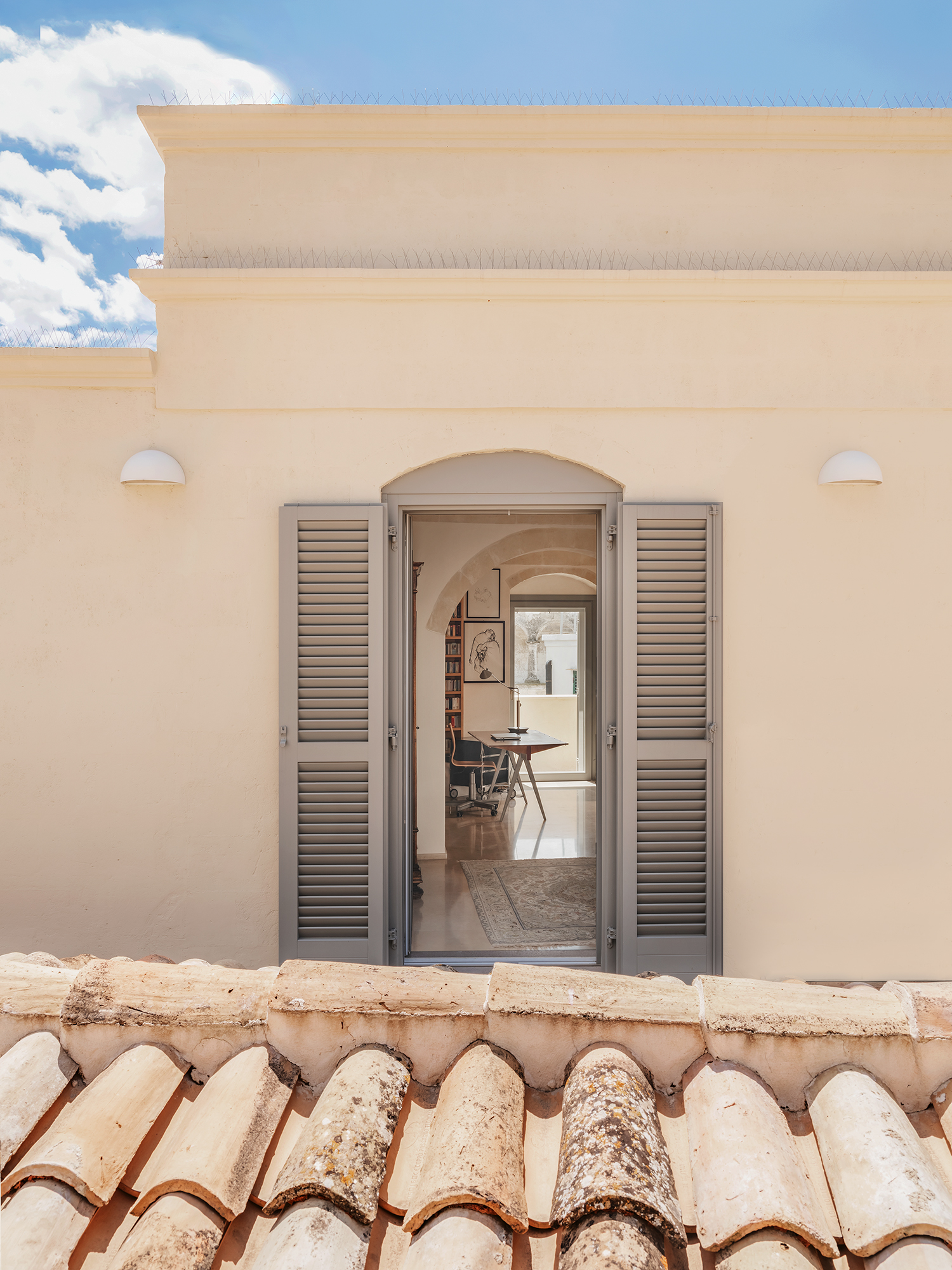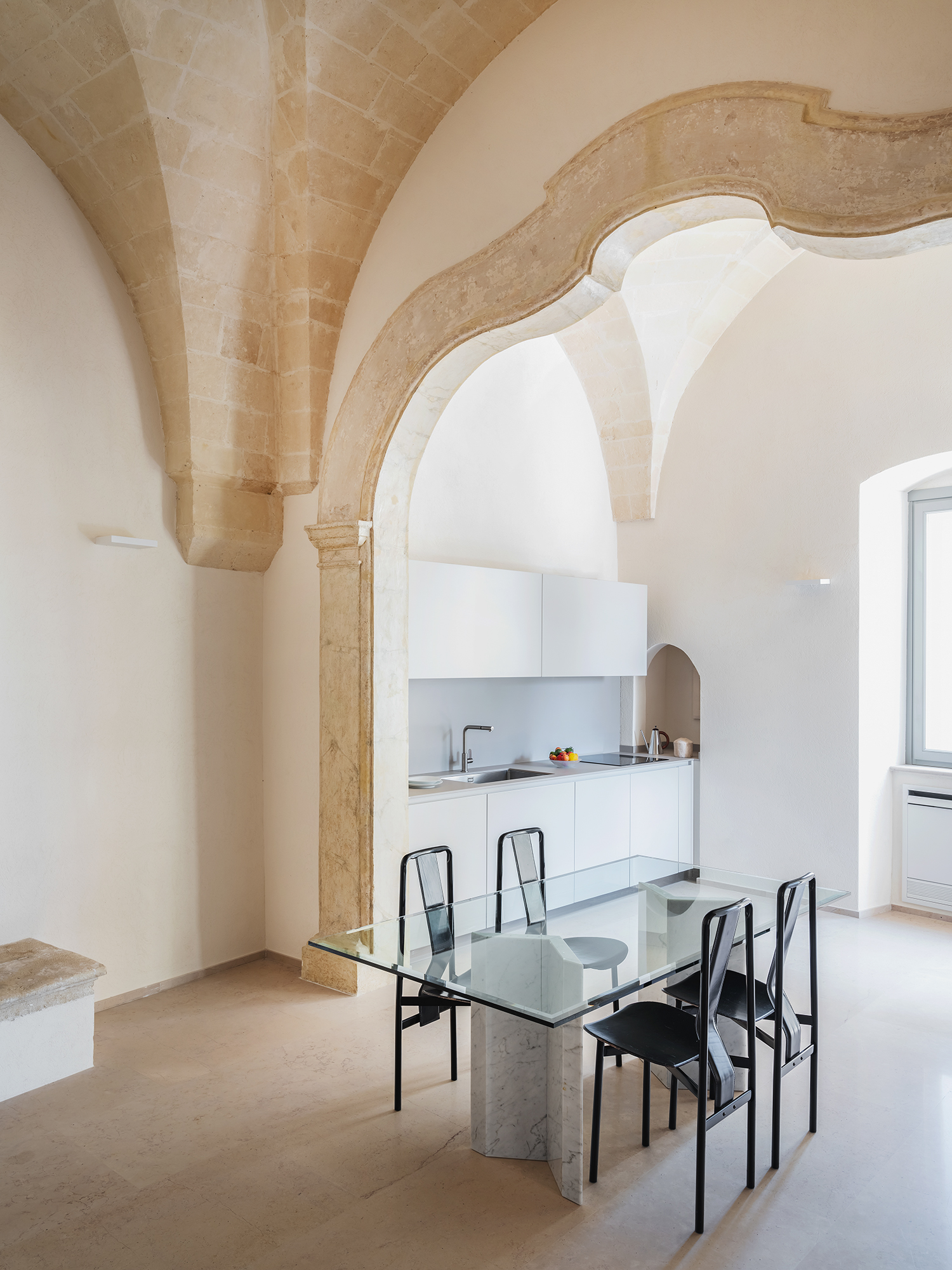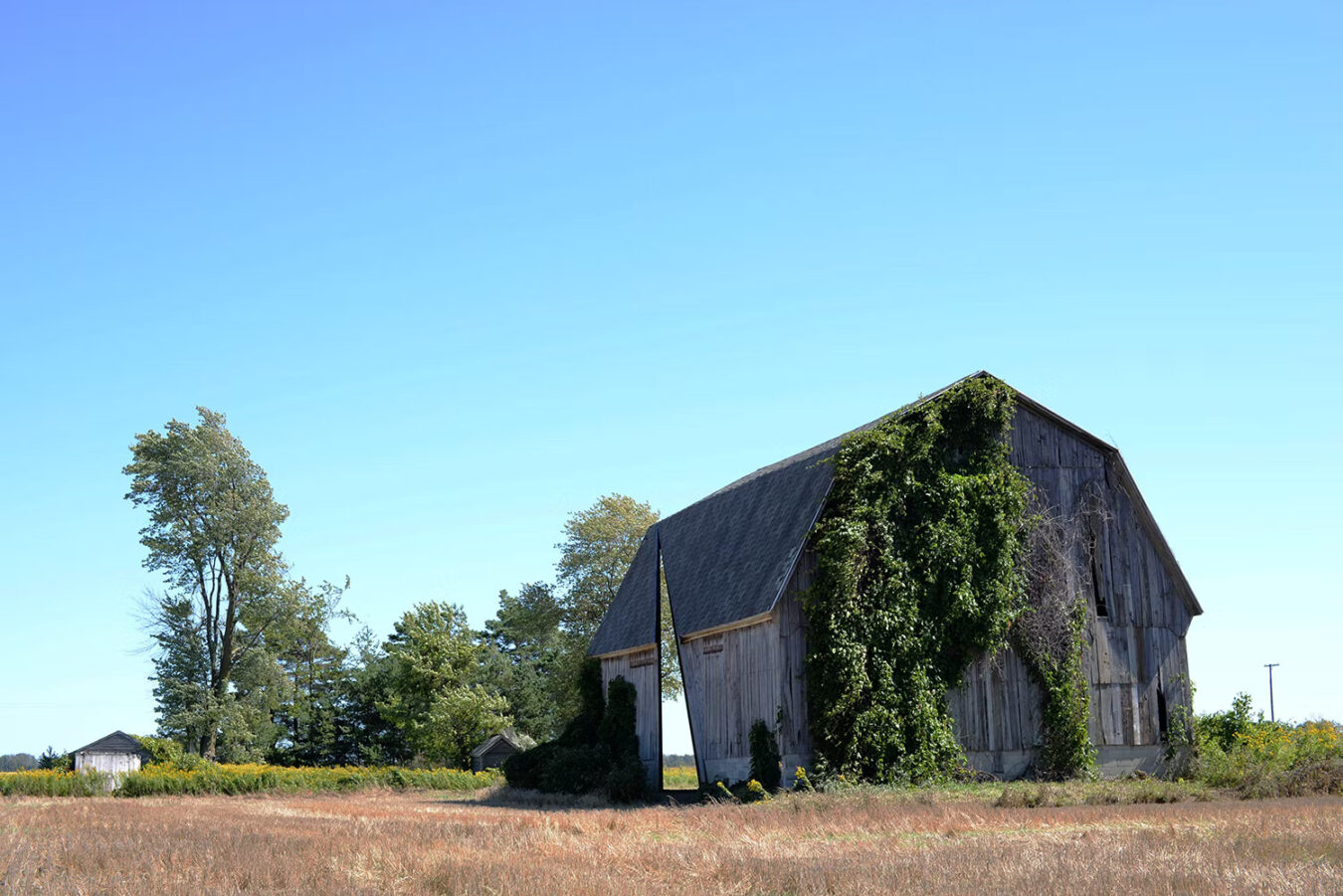In the heart of Matera — a remarkable city suspended between history and landscape — stands an 18th-century building that now tells a new story, thanks to a restoration project by Valentina Andriulli in collaboration with Studio Suarez Laterza. The project involved a historic palazzo spread across three levels and serves as a concrete example of how the existing fabric can be transformed with care and coherence, preserving the genius loci while adapting it to today’s living needs. A balance between heritage and contemporary sensibility.
Matera, with its winding stone-carved alleys and the UNESCO-listed Sassi, offers a powerful sense of place. This project goes beyond a simple renovation — it is an architectural restoration that highlights the building’s original geometries, tuff vaults, and historic decorations, reinterpreting them and introducing new elements, often minimal, through an essential and refined language.
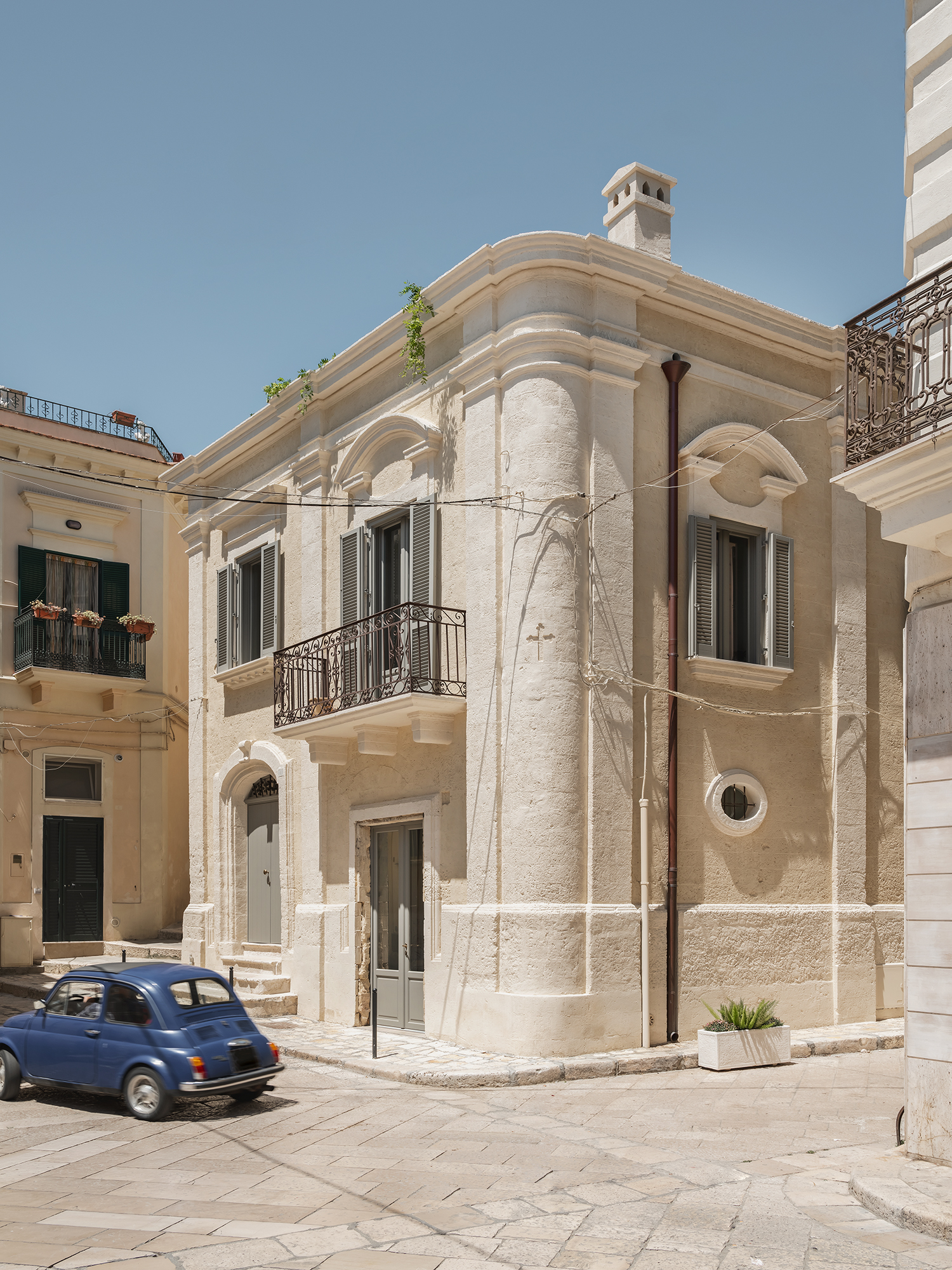
From the artistic direction to the design process and site management, Valentina Andriulli followed the project from the very beginning — advising the clients in the selection of the property, the definition of spaces and their functions, and especially in the choice of materials, finishes, and furnishings. A tailored and thoughtful journey.
The intervention preserved the original proportions, bringing new light and breath into the rooms through a calibrated use of natural light and careful attention to furniture and finishes. Restored decorative elements are paired with lime finishes, terracotta floors, natural stone, and wood — all local materials, treated with respect for their essence.
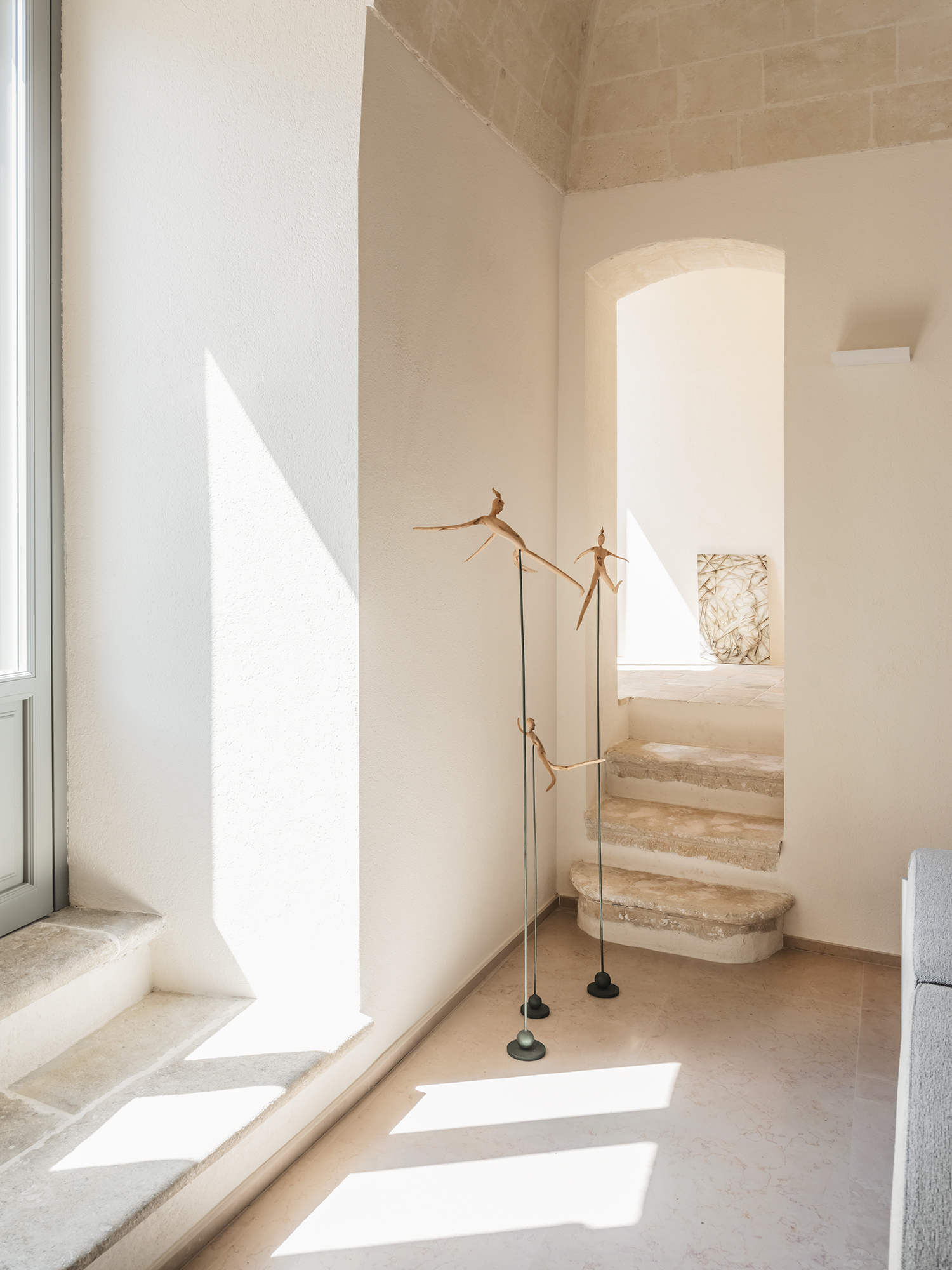
As is always the case in Valentina Andriulli’s work, art plays a discreet yet central role here as well. Carefully selected pieces integrate into the spaces with balance, offering new interpretations without overpowering the whole. The furnishings are a mix of period elements and custom-designed pieces, many of which were crafted by local artisans. Each space is designed to support daily life with thoughtful, measured minimalism — without compromising on functionality.
Details such as niches, symmetries, windows framed in tuff with views of the city, or the way light reflects off pale materials along the corridors, all reflect the consistency and sensitivity behind the entire intervention.
Without ostentation or excess, this project demonstrates how restoring built heritage can generate a new quality of living — a path that is both possible and desirable, especially in history-rich places like Matera. Or, more broadly, across Italy.
